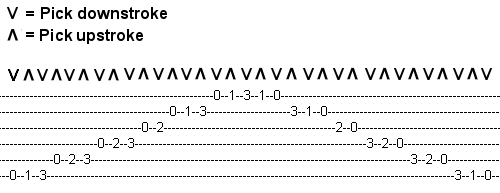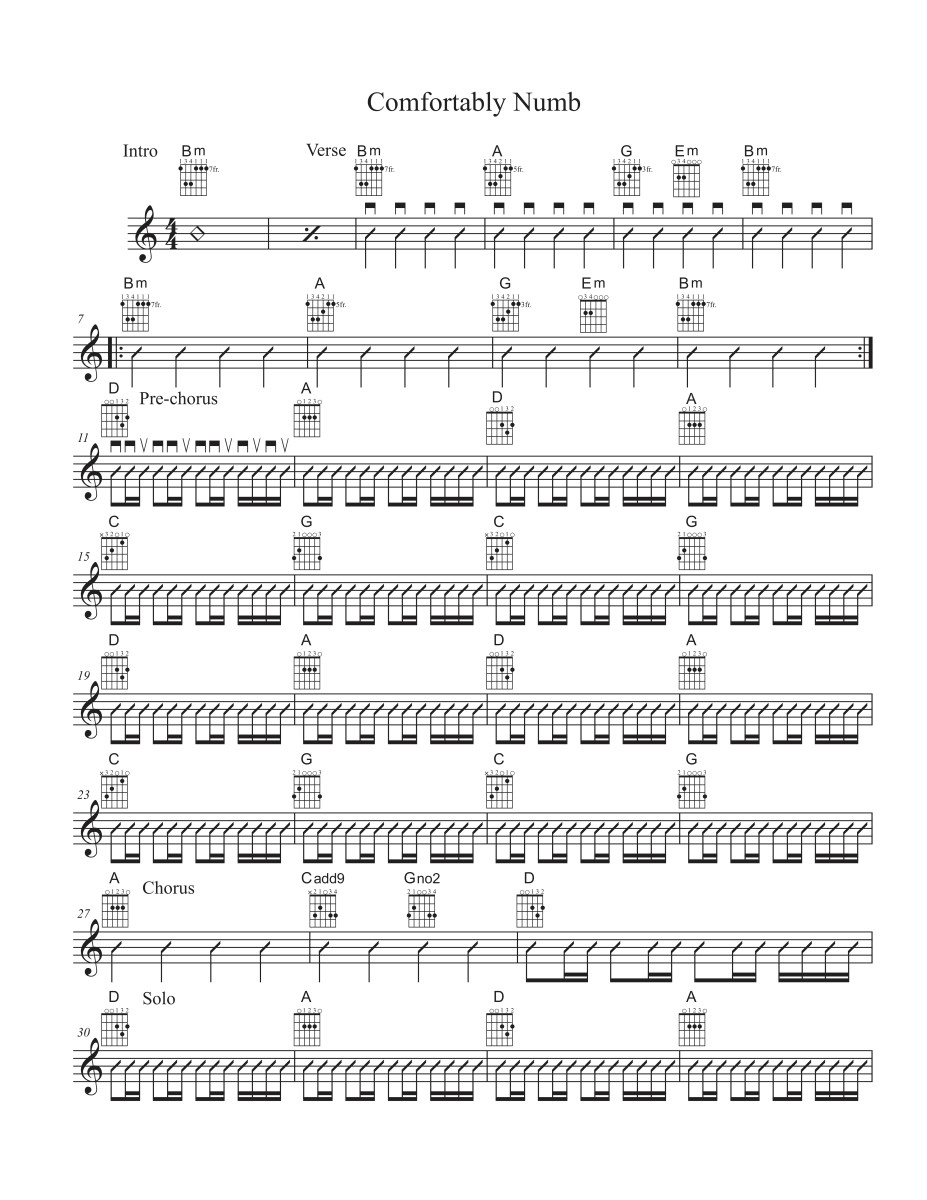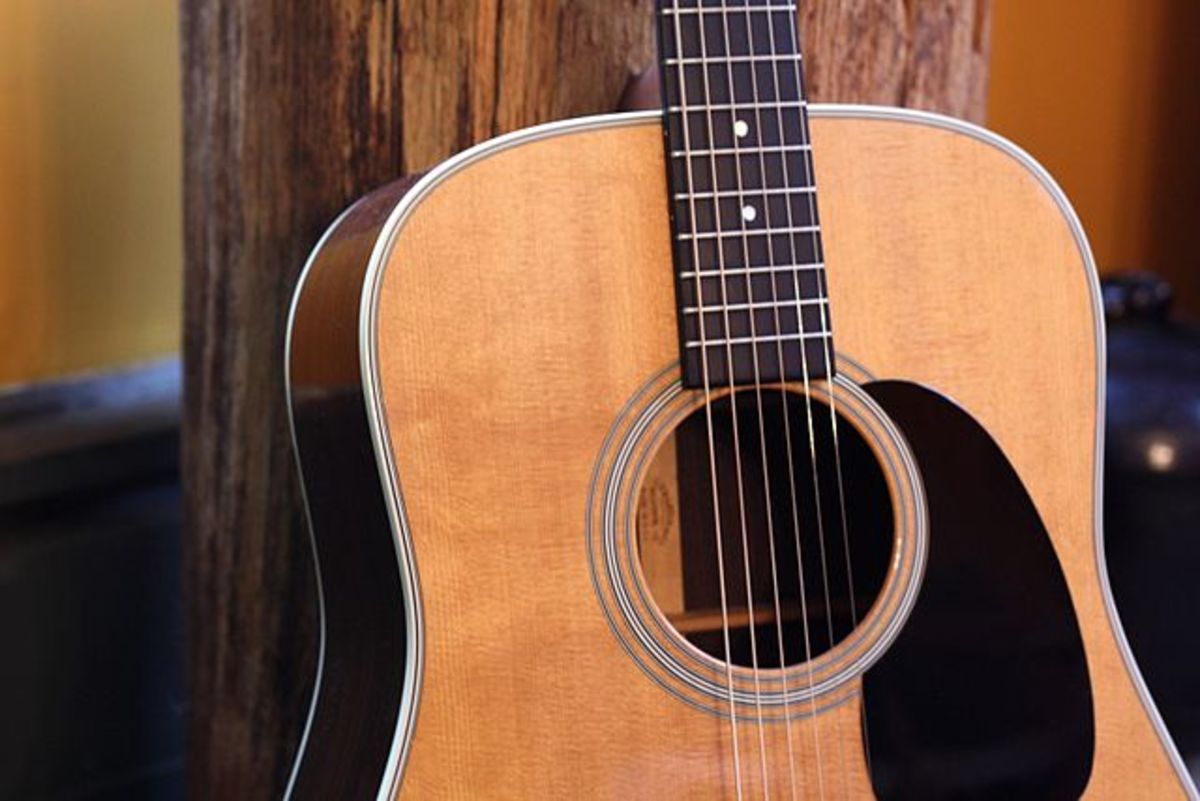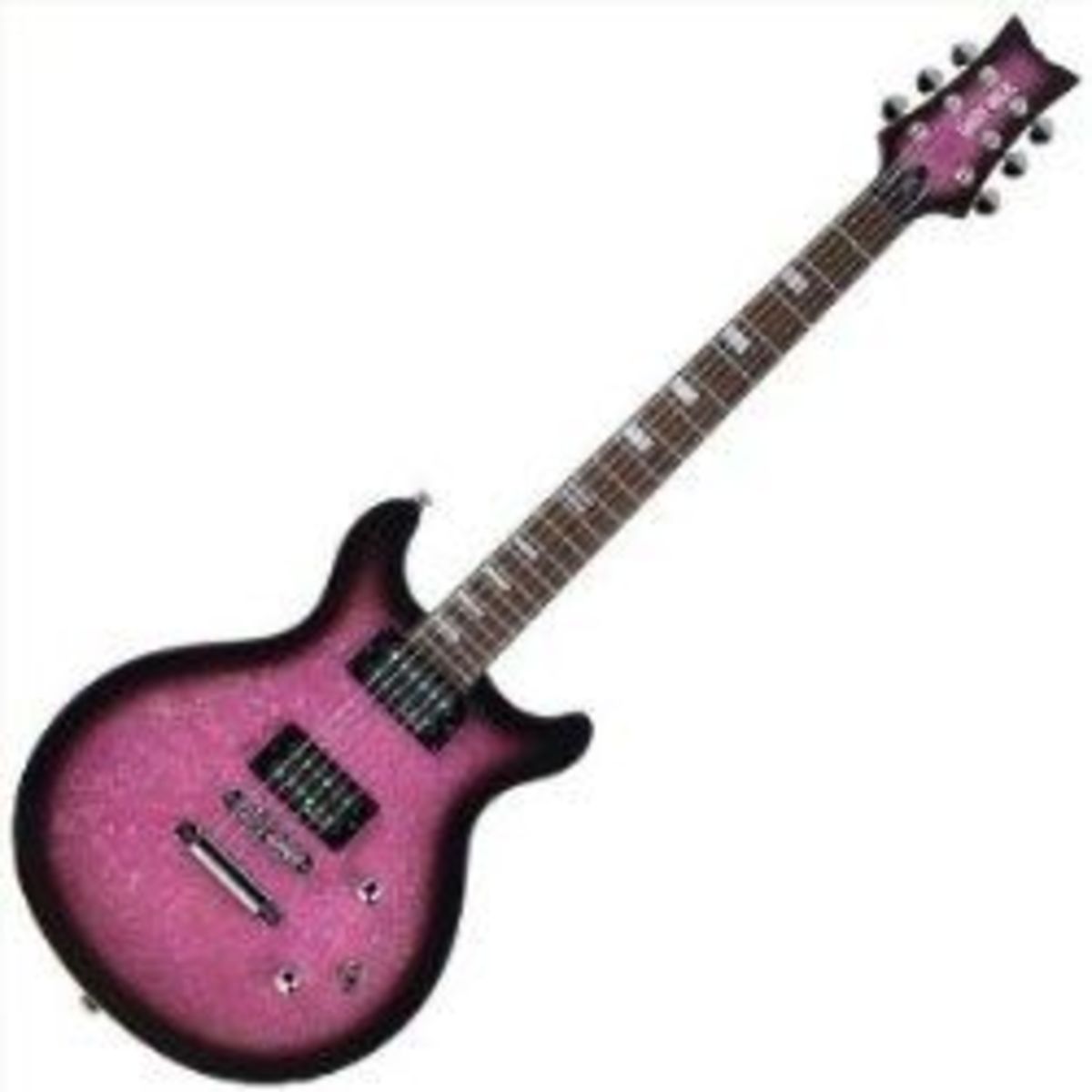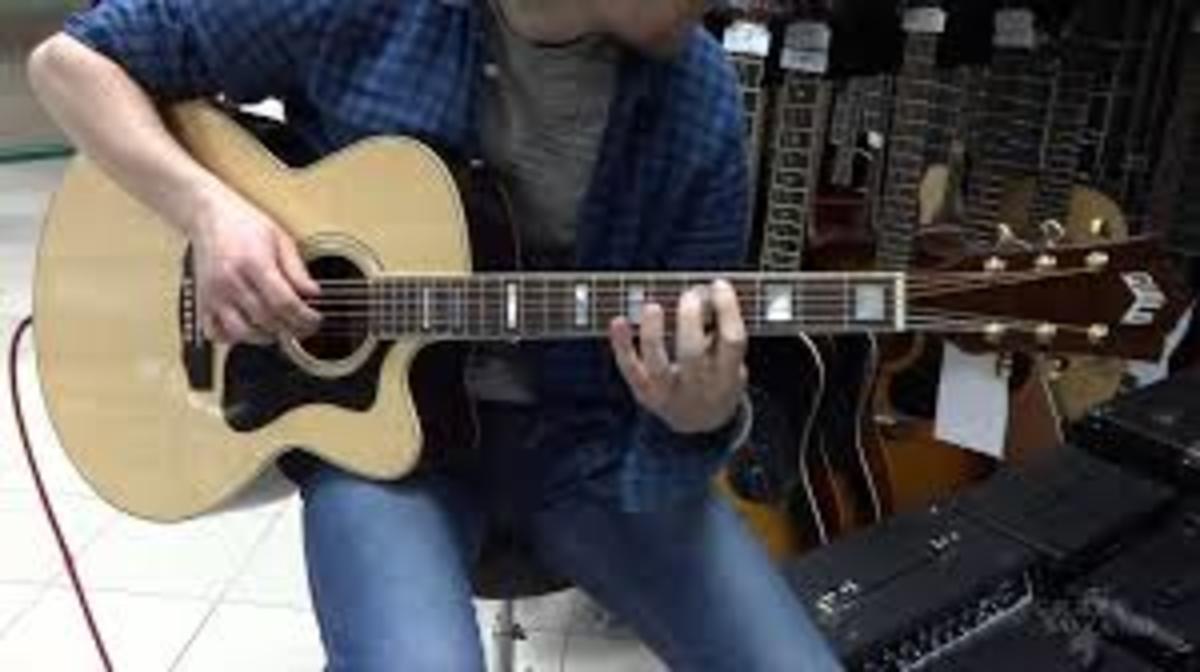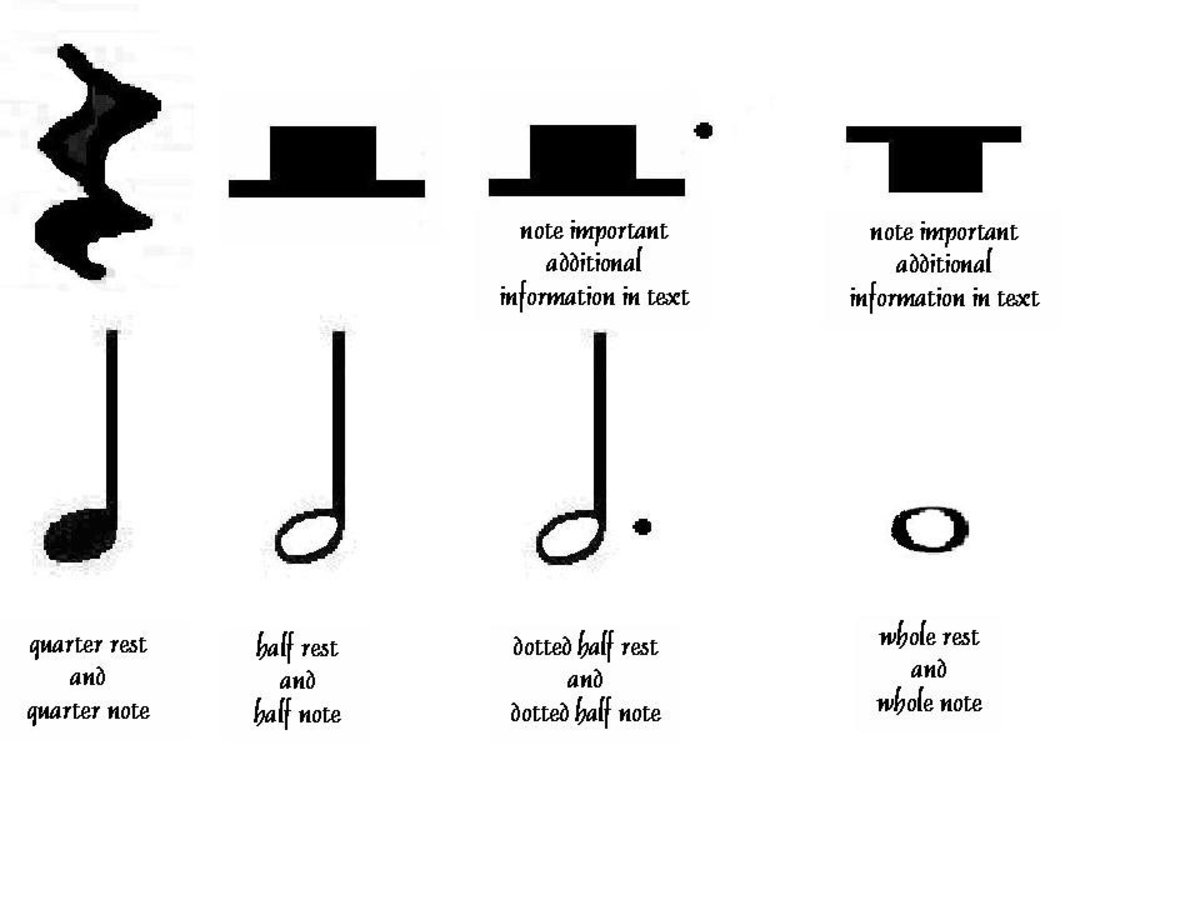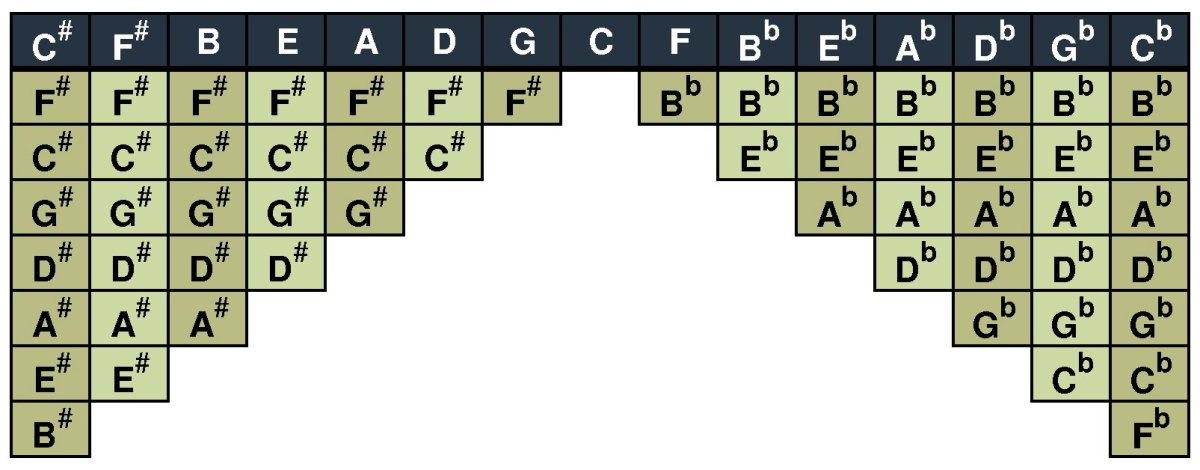Learn how to play electric guitar - beginner guitar lessons
Learning how to play the electric guitar can be both the same yet different from an acoustic guitar
To start off with, let's look at what makes playing the electric guitar pretty much the same as learning to play on an acoustic guitar.
The first solid body electric guitar was invented by Les Paul in the early 1940s. It was basically an acoustic guitar, with the center replaced by a solid piece of wood, on which were mounted two pickups. So you see, it's got the same fretboard and tuning as an acoustic guitar, so you play it the same - well almost.
All the chords on an acoustic guitar are exactly the same as an electric guitar, and all the scales.... I'm sure you get the picture. There is a difference though in the styles that get played. It's a different approach, but not one that should cause too much concern for a beginner learning how to play electric guitar.
What's great about learning how to play on an electric guitar?
The first and most important thing about learning on an electric guitar, is that it's much easier on the fingers. This is mostly because you can use lighter gauge strings, and the string height is easily adjustable at the bridge. I personally recommend that anyone learning how to play guitar, whether they want to play acoustic or electric, should learn to play on electric guitar.
Later on, when your fingertips have hardened a bit, then move on to acoustic if you want. Whether you learn to play electric guitar or acoustic, it's always nice to eventually have one of each.
Beginner guitar lessons suited to both acoustic and electric guitar.
For starters, no matter which type of guitar you play, the first set of chords you'll learn are called open chords. These are the easiest guitar chords to play. A little later, when your fingers get used to the guitar, you should move on to some of the more difficult chords, and then barre chords.
You can find most of the information you need on beginner guitar chords at play-electric-guitar.net/beginner-guitar-chords.html
Which electric guitar lessons are people having success with?
Easy rock guitar chords
Here's something I think will make it easy to start having fun on the electric guitar, without too much practice or stressed out fingers.
It's an easy way of playing power chords, and you only need one finger on the fretboard to play them.
The first thing you'll have to do is tune your 6th string (The thickest one) down from E to D. This makes it possible to play power chords using the 4th, 5th and 6th string.
Basically, you must detune your 6th string so it sounds like the same note as the open 4th string, only an octave lower. If you're not sure what an octave should sound like, play any open string on the guitar, and just afterwards play the same string again but press behind the 12th fret when you do.
The note at the 12th fret is an octave higher than the open string, and similarly the open string is an octave lower than the 12th fret. It's the same note name, either twice or half the frequency.
Here are the guitar chords in Dropped D tuning

Electric guitar power chords in dropped D video
Guitar tablature basics
I would like to show you something that will make learning how to play guitar a whole lot easier. It's called guitar tablature, or guitar tab for short. Guitar Tabs are a simplified way of reading guitar music.
There are a few major differences between guitar tablature and conventional sheet music, the first one being that no time signature or note length is displayed, so you'll need to have a recording of the guitar piece to understand exactly how it's supposed to sound.
The second major difference is more a matter of appearance than function, and that's because guitar tabs have six lines - one for each string, as opposed to the five lines in regular music notation.
So how will understanding Tab help you to learn how to play electric guitar?
Well, Guitar tabs are very popular on the internet, and a lot of guitarists like posting useful tablature of their favorite songs on various websites. Because tabs are so easy to understand, and very descriptive of what's actually happening on the fretboard, it's easier to give guitar lessons with - so just about everyone uses it.
Here's how to read guitar tabs.
The picture below should give you a good basic understanding of how to read guitar tablature. Guitar tabs are read left to right, and even though there is no time signature, you can sometimes get a good idea of the time interval between notes based on how far apart the notes are.
It's not entirely accurate, but very often people who write tabs try to give as good an indication as possible of how it should be played.
I've kept this quite basic. There are more advanced guitar tab characters to learn, but as a beginner guitarist, this will get you a fair distance.
Basic guitar tab

The guitar lesson that saved me
The C major scale.
A long time ago, when I went for my first classical guitar lesson, I was given a finger exercise in the key of C major. This wasn't even the first lesson, but just something I was told would help develop the dexterity in my fingers, and that I could work on in my own time. Little did I realise that this simple exercise would be the foundation on which I later taught myself how to play lead guitar.
The C major scale is all the white notes on a piano, in other words there are no sharps or flats. The scale of C is the basis of all western music. Even though there are other keys to play in, they're all named after the notes in the C major scale.
A scale is named major or minor or whatever else, like harmonic minor or melodic minor because of the intervals between the notes, and its key is determined by the starting point. In the C major scale, the first note is C, and the rest of the notes are D, E, F, G, A, B, and then C again. The scale repeats itself and each succeeding progression is an octave higher.
The note intervals of the major scale are described as tones. A tone is equal to 2 frets, and a semitone is one fret distance. In the C major scale the intervals go like this;
Tone, tone, semitone, tone, tone, tone, semitone. So basically what that means is between E and F is a semitone, and between B and C is a semitone. All the rest are a tone apart, or two frets apart. A tone is also known as a whole tone.
which fingers to use
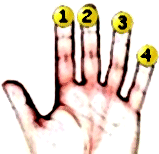
C major 1st position notes
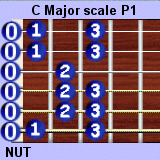
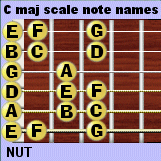
Playing the scale pattern
When pressing the notes of this scale pattern, the idea is to have your fingers as perpendicular to the fretboard as possible. This is to make the notes sound clearly. The best place to press down is about a third to midway between the frets.
This picture shows which fingers correspond to those indicated in the first diagram below.
If you need a little help on how to hold the plectrum - here's How to hold a plectrum
How to pick these notes
To get the most out of this exercise it's important to consider the picking hand as well. The best way is to pick the first note with a down stroke, the second with an upstroke, the third with a down and so on.
Ideally you should start on the 6th string - That's the thickest one, and play from the open E, progressing up until the G note on the first string, and then back down again until the open E 6th string.
In the video below, please excuse me if I get a bit carried away at the end. Sometimes I just can't stop myself from playing guitar a bit longer.
Guitar lesson video of C major scale in the first position
Tablature for C major
